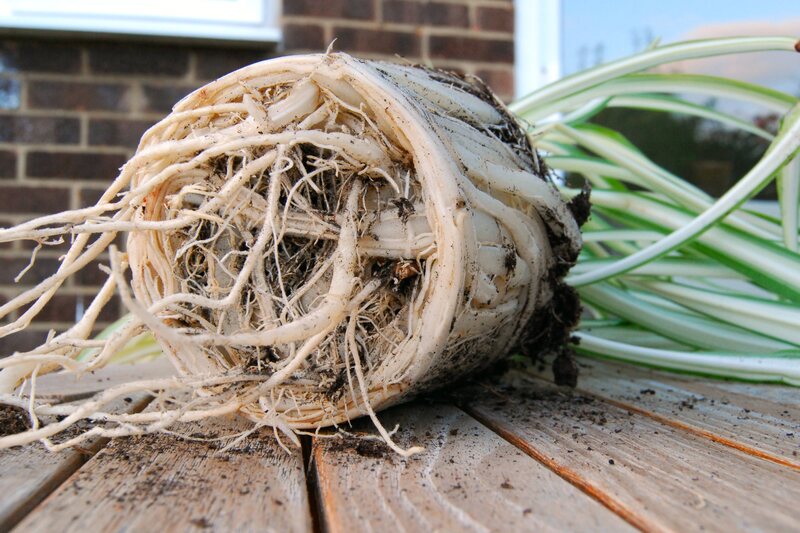Guard Your Garden from Winter's Icy Touch
Posted on 11/09/2025
Guard Your Garden from Winter's Icy Touch: Essential Tips and Strategies
As the days grow shorter and temperatures begin to plummet, dedicated gardeners everywhere start to worry about the safety of their cherished plants. Guarding your garden from winter's icy touch is more than a seasonal chore--it's an art that blends practical knowledge with a touch of horticultural wizardry. If you want your landscape to survive (and thrive) when the frost returns, this comprehensive guide will help you incorporate every trick in the book.
Why Winter Protection Matters for Your Garden
Winter can be one of the harshest seasons for plants, with cold temperatures, biting winds, and severe frost threatening to damage roots, leaves, and stems. Whether you grow delicate perennials or robust evergreens, protecting your garden from winter's cold grip is crucial. Proper care ensures that your greenery will burst back to life in spring, healthier and more vibrant than ever.

Understanding Winter's Impact: How Cold Weather Harms Your Garden
Before learning how to guard your garden from the cold, it's important to understand how icy weather affects plants. Here are the main risks your garden faces:
- Soil Freezing: Freezing and thawing cycles can cause soil to expand and contract, potentially uprooting shallow-rooted plants.
- Frost Damage: Frost can destroy plant cells, leading to wilted, blackened foliage and stunted growth.
- Water Loss: Cold winds and frozen soil make it difficult for plants to access water, leading to dehydration.
- Root Injury: Exposed roots become vulnerable, reducing the plant's ability to absorb nutrients.
- Pest & Disease Risk: While some bugs go dormant, others may take shelter in your mulch or under bark, while diseases can thrive in rotting plant debris.
Proven Methods to Guard Your Garden from Winter's Icy Touch
There are a variety of proactive steps you can take to ensure your garden endures the winter months with minimal harm. Below, we offer expert tips and time-tested strategies for winter-proofing your garden.
1. Mulch: The Insulating Blanket Your Plants Need
Mulching is one of the most effective methods to guard your garden from icy weather. Applying a thick layer of mulch insulates the soil, regulates temperature, and reduces moisture loss.
- Best Materials: Straw, shredded leaves, pine needles, bark chips, or compost make excellent winter mulch.
- How Much? Spread 2-4 inches of mulch over root zones, especially around young plants and perennials.
- Timing: Apply mulch when the soil is moist and just before the first hard freeze, not too early or you may invite pests.
Tip: Don't pile mulch directly against stems or trunks, as this can encourage rot.
2. Cloches, Cold Frames, and Covers: Create a Protective Microclimate
Physical barriers offer guaranteed protection against frost, especially for fragile or newly-planted crops. Here's how to use them:
- Cloches: These bell-shaped covers (glass or plastic) shield individual plants or seedlings from frost and wind.
- Row Covers: Floating row covers or garden fleece protect larger beds, allowing in light and moisture but blocking harsh conditions.
- Cold Frames: Build simple boxes with transparent lids to create mini greenhouses perfect for over-wintering salads and hardy greens.
Secure covers well, weigh them down with rocks or soil, and remove them on sunny days to prevent overheating.
3. Pruning and Cleanup: Remove the Threats
Cleaning up your garden in autumn is critical if you want to guard your garden against winter's icy grip. Dead or diseased stems harbor pests and infections that flourish in damp winter conditions. Pruning reduces wind rock and prevents branches from snapping under snow loads.
- Trim Dead Growth: Prune herbaceous perennials, shrubs, and trees to remove weak or diseased branches.
- Clear Debris: Remove fallen leaves (except if using them as mulch) and spent vegetables to minimize overwintering pests.
- Proper Disposal: Compost only healthy material to avoid spreading disease to next year's crops.
4. Watering Wisely Before the Freeze
It might seem counterintuitive, but proper hydration is key before winter arrives. Dry plants are more susceptible to cold injury.
- Deep Water: Soak root zones thoroughly before the ground freezes, focusing on evergreens and newly-planted trees.
- Avoid Overwatering: Excess moisture can cause roots to rot. Let the soil dry slightly between watering.
- Water Early: Always water in the morning so plants absorb moisture before nightfall.
5. Windbreaks and Barriers: Stop Freezing Gusts in Their Tracks
Bitter winter winds can cause 'windburn', sucking moisture from needles and leaves. Protect your garden with windbreaks:
- Temporary Barriers: Erect burlap screens, snow fencing, or wooden panels around exposed beds or sensitive plants.
- Natural Windbreaks: Plant evergreen hedges or dense shrubs on the windward side of your property.
- Staking: Support young trees to prevent wind rock and root disturbance.
6. Protecting Lawns, Containers, and Water Features
Don't forget your lawn, potted plants, and water features when planning your winter garden defense!
- Lawns: Keep grass slightly longer before winter, avoid walking on frosty turf to prevent compaction, and clear fallen leaves to stop fungal disease.
- Containers: Move pots to sheltered locations, group together for warmth, and wrap in burlap or bubble wrap. Ensure drainage holes remain unblocked.
- Ponds & Birdbaths: Remove pumps, clean and cover water, float a tennis ball to prevent ice from sealing the surface (for oxygen).
Plant Choices: Building a Cold-Tolerant Garden
One of the best ways to guard your garden from winter damage is to start with climate-appropriate plants. Here's how to select wisely:
- Native Species: Local plants are naturally adapted to your soil and climate--a safe bet for year-round survival.
- Hardy Perennials and Shrubs: Choose varieties with proven cold resistance; check the USDA Hardiness Zone for recommendations.
- Evergreen Options: Evergreens provide structure and color all winter, and many are tough enough to withstand snow and ice.
- Annuals as Mulch: Some annuals can be left in place to die back, providing valuable protection for the soil and roots below.
Consult with local nurseries or garden centers for the best winter-hardy plants for your region.
Seasonal Garden Maintenance Checklist
Want to make sure you don't forget a thing? We present a quick checklist to help protect your garden all winter long:
- Test soil drainage--fix any water-logging before freeze-up.
- Empty and store irrigation hoses and sprinklers.
- Finish late summer fertilizing--avoid late fall, as it encourages tender new growth.
- Label perennials and bulbs for easier location come spring.
- Keep an eye on snow and ice load--knock heavy snow off shrubs to prevent breakage.
- Inspect fences and garden structures, repairing damage before storms arrive.
Common Winter Garden Problems & Solutions
Even the most vigilant gardener may encounter issues during winter. Recognize the symptoms and solve problems fast to keep your garden resilient until spring:
- Frost Cracks: If you see vertical splits in tree bark, wrap trunks with burlap or tree guards as prevention.
- Winter Burn: Brown or scorched leaves on evergreens indicate moisture loss. Use antidesiccant sprays and provide extra wind protection.
- Rodent Damage: Voles, mice, and rabbits may eat bark beneath the snowline. Install mesh barriers or use repellents.
- Mold and Rot: Good airflow and diligent cleanup reduce fungal disease--avoid heavy mulching directly against stems.
- Heaving: Raised plants? Gently press roots back into place and add extra mulch if needed.
DIY Projects: Enhancing Your Garden's Winter Defense
Are you a hands-on gardener looking for creative solutions? Here are some DIY projects to help protect your garden from winter's icy clutch:
- DIY Cold Frames: Construct cold frames using old windows and wooden frames - an excellent way to overwinter greens and starts.
- Recycled Bottle Cloches: Cut the bottoms off plastic bottles and place them over young veggies or delicate plants for instant frost shields.
- Pallet Windbreaks: Repurpose wooden pallets as temporary barriers for flower beds or young trees--simple, affordable, and movable.
- Burlap Plant Wraps: Wrap tender shrubs and small trees with layers of burlap for exceptional wind and frost protection.

Embrace Winter, Safeguard Your Outdoor Sanctuary
With a little planning, thoughtful preparation, and strategic garden care, you can successfully guard your garden from winter's icy touch. Protecting your outdoor haven ensures that plants, wildlife, and soil all survive the harshest months. When spring arrives, your well-cared-for landscape will reward you with vibrant growth and renewed beauty.
Don't let winter's chill catch you off guard--start preparing today and enjoy gardening success all year round!
Frequently Asked Questions about Winter Garden Protection
-
Q: When should I start winterizing my garden?
A: Begin as soon as nighttime temperatures approach freezing. Complete all major chores, such as mulching, pruning, and covering tender plants before the first hard frost. -
Q: Can I use plastic to cover my plants in winter?
A: While plastic sheets can trap heat, they don't breathe and could lead to condensation or overheating. If you must use plastic, ensure it does not touch plant leaves and allow for ventilation. -
Q: Should I fertilize my plants during winter?
A: Avoid fertilizing in late fall or winter as it promotes soft new growth vulnerable to cold. Instead, apply compost or mulch as a slow-release nutrient source. -
Q: Do all plants need to be covered?
A: No. Focus on tender perennials, seedlings, recent transplants, and any plants not suited to your region's lowest temperatures.
Final Thoughts: Guard Your Garden from Winter's Icy Touch
Winter no longer needs to be a time of uncertainty for gardeners. By using winter protection strategies for your garden--from mulching and covering to smart plant selection and maintenance--you can preserve your outdoor sanctuary. Prepare now, and you'll greet spring with healthy plants, a resilient landscape, and the pride of knowing you shielded your garden from harsh winter elements.
Share your own winter garden protection tips in the comments below and help fellow gardeners thrive all year!

